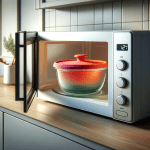
Imagine a world where computers can understand our instructions as clearly as we understand each other’s words. In computer science, logic is that magical translator. It’s not just a set of rules; it’s a language that breathes life into computers, making them capable of solving complex puzzles and making smart decisions. For those of us living in the digital age, grasping the role of logic in computer science is like uncovering the secret spells that power everything from our smartphones to the algorithms suggesting our next favorite song or show.
What is Logic in Computer Science?
Think of logic as the brain’s way of reasoning, but for computers. In computer science, it’s the secret sauce that creates crystal-clear instructions that computers can follow. These instructions are based on true or false statements — a system called Boolean logic. Named after the genius mathematician George Boole, it’s a fundamental concept that’s the backbone of computer programming and the creation of digital circuits. It’s like the DNA of digital devices.
Boolean Logic — The Binary Backbone
Dive into the heart of any computer, and you’ll find it speaking in binary, a mysterious language of 1s and 0s. Boolean logic is the Rosetta Stone that translates our human instructions into this binary language. It uses operators like AND, OR, and NOT to create complex expressions that computers can understand. For instance, when you search for something online using “AND” or “NOT,” you’re actually commanding the search engine using Boolean logic.
The Role of Logic in Programming
Programming is essentially storytelling with logic. You’re creating a story with a logical flow of instructions. Conditions and loops, the bread and butter of programming, are woven together with logical statements. Take an ‘if-else’ statement — it’s like a crossroads in a story: if one thing is true, go this way; otherwise, take another path. This logical structure allows programmers to create software that can make decisions and solve problems. The graph below visually represents the importance of logic in various fields of computer science. Each bar corresponds to a different field, with an ‘Importance Score’ indicating the level of relevance or impact that logic has in that area. For instance, gaming and programming score the highest, highlighting the crucial role logic plays in developing video games and writing computer programs. Similarly, AI & machine learning, digital circuit design, and data analysis also show substantial importance, albeit to varying degrees.

Logic Gates — Building Blocks of Digital Systems
In the hardware world, logic comes alive through logic gates. These tiny building blocks are like the atoms of any digital system. Each gate performs a simple logical function, like AND, OR, or NOT, on its input signals to produce a result. Combining these gates creates circuits capable of complex computations, laying the foundation for everything from playful electronic gadgets to the brains of computers.
From Logic to Algorithms
Algorithms are the secret recipes of computer science, a series of instructions designed to solve problems or perform tasks. The creation of an algorithm is an art form driven by logic. It’s about understanding a problem, breaking it down into steps, and logically organizing these steps so a computer can follow them. This process is behind the scenes of everything from sorting data to the artificial intelligence that’s changing our world.
Logic in Artificial Intelligence
In the world of artificial intelligence (AI), logic wears a sophisticated hat. It’s what enables machines to think, learn, and make decisions like humans. Logic-based AI involves creating systems that can process information and draw conclusions from it, akin to the human mind. It’s at the forefront of developing intelligent machines capable of everything from translating languages to steering self-driving cars.
Challenges in Logical Programming
Navigating the seas of logical programming isn’t without its storms. The biggest challenge is ensuring that the logic in a program mirrors the real-world scenario it’s meant to address. Errors in logic can lead to programming mistakes and unintended consequences, making precision and attention to detail critical in logical programming.
The Future of Logic in Computing
As we sail into the future of computing, the role of logic continues to evolve. Quantum computing is bringing a new player to the game — quantum logic, which operates on different principles than classical Boolean logic. This emerging field promises to revolutionize information processing, opening up new realms of computing power and possibilities.
Conclusion
Logic in computer science is the secret language that makes our digital world tick. It’s what allows computers to become powerful tools in our everyday lives. From the basics of programming to the complexities of AI, logic is the conductor orchestrating the symphony of digital processes that shape our daily interactions with technology. It’s a thrilling area of study, offering a peek into the inner workings of the gadgets and systems that have become indispensable to modern living.
About Disruptive Concepts
Welcome to @Disruptive Concepts — your crystal ball into the future of technology. 🚀 Subscribe for new insight videos every Saturday!







